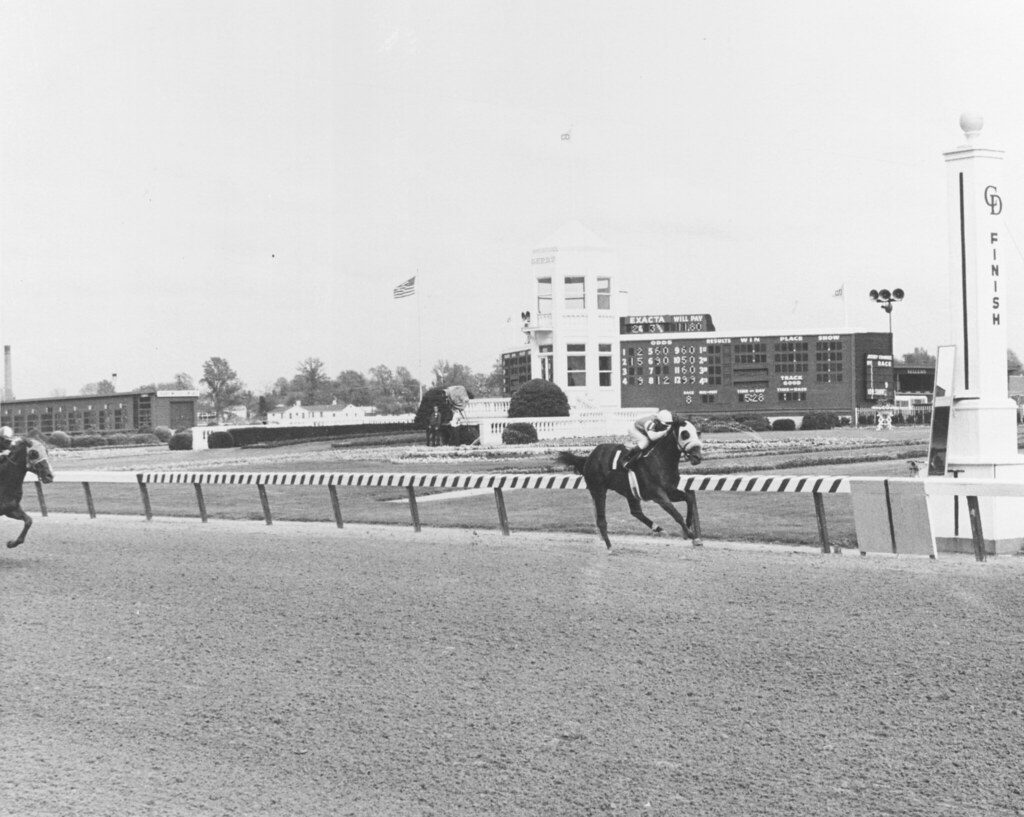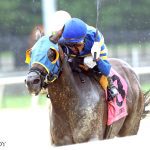BackTracks: Smarty Jones’s magical ride
If you were watching racing in 2004, the Smarty Party was part of your Triple Crown experience. The little-horse-that-could rolled in from Pennsylvania to pit his undefeated record against the best three-year-olds of his crop and showed them the speed and stamina necessary to come within a length of the Triple Crown. His trip from Philadelphia Park to Oaklawn to Belmont brought millions of fans along, giving them a chance to fall in love with this star.
For all his abundant talent, the Smarty Jones story is as much about what one observer simply described as “something else” going on. His run to glory, and nearly to immortality, and his compelling back story, made him irresistible.
When Pat and Roy Chapman met, they could not have predicted where their bonding over Roy selling Pat a car would take them. As a married couple, they went on adventures: deep sea fishing, fox hunting in Maryland and Pennsylvania, and, in 1986, the horse business. They bought a farm in Chester County, Pennsylvania, and named it Someday Farm, where they bred horses and raced primarily at Philadelphia Park, now known as Parx Racing.
In 1993, the Chapmans bought a yearling by champion sprinter Smile out of a Foolish Pleasure mare, a filly they would name I’ll Get Along. She raced 39 times for Someday Farm and trainer Bob Camac, winning twelve of those starts including stakes wins in the Alma North and the William Parker. As a broodmare, her second foal was a mating that Camac,suggested, matching I’ll Get Along with the young stallion Elusive Quality.
The combination brought them a leggy but small chestnut colt with a smudge of white on his forehead and a couple of hind socks. That he ever raced in the silks of Someday Farm is owed to the potential I’ll Get Along’s colt showed from early on. Circumstance nearly had other plans for the Chapmans and their future champion.
“Some serious horse”
Bob Camac and his wife Maryann were tragically murdered by her son from a previous marriage in December 2001. As a result, the Chapmans started to back out of the horse business.
Before they could disperse of all of their stock, however, George Isaacs of Florida’s Bridlewood Farm, where they had sent their weanlings, advised they keep two of of them: one was I’ll Get Along’s chestnut colt.
They named him Smarty Jones in honor of Pat’s grandmother, whose childhood nickname had been “Smarty.” The couple took Isaacs’ advice and found a new trainer for their two remaining horses.
Based at Philadelphia Park, John Servis had had success with the filly Jostle for Rick Porter and Fox Hill Farms, winning Grade 1 stakes like the Alabama and the Coaching Club American Oaks. The Chapmans’ hopes were pinned on these last two horses, and they looked to Servis and his decades of experience for making the most of their youngsters.
When Smarty arrived, though, he did not stand out right away.
“He had shown some signs at the farm that he was pretty talented,” the trainer remembered recently. “They liked him a lot when they sent him to me. When we got him, he trained okay. He had started to put in a couple of decent works, like he might be all right before he got hurt at the gate.”
The colt’s two-year-old season in 2003 was an abbreviated one after Smarty Jones spooked and hit his head on the starting gate during a training session.
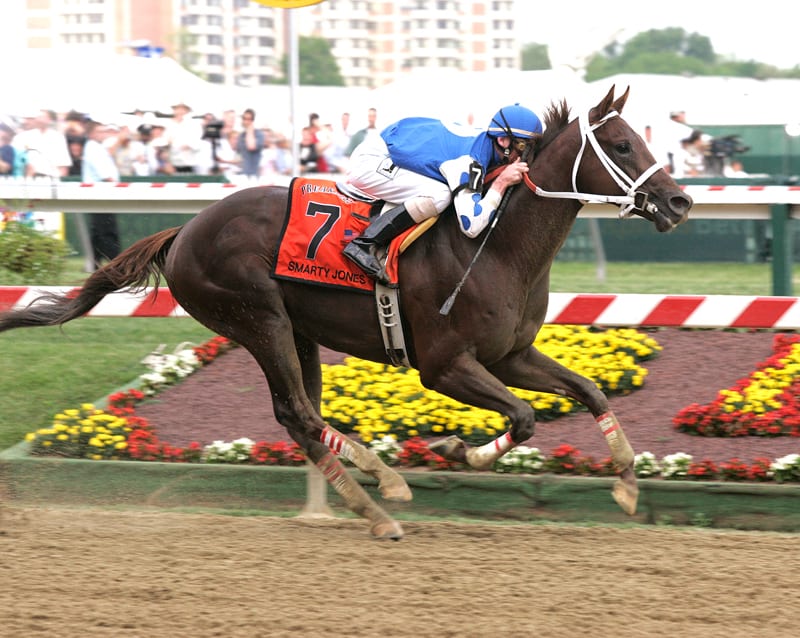
“He was in the gate with another horse. The two of them were standing in there. And for whatever reason, he just blew. He never did anything before like that, and he never did anything after like that,” Servis recalled. But the injury knocked the colt out of training for several months, with two fractured bones near his left eye and a crushed sinus.
When Smarty Jones came back to Servis’s barn after his months of recuperation, Servis said, “He was ready to run.”
“His first start, he won fairly impressive. But his second start, which was in the [Pennsylvania Nursery], that was the race that was very impressive. That was the race that a lot of people opened their eyes and like, whoa, that was some serious horse.”
That 15-length win, in 1:21.88 for seven furlongs, raised eyebrows and hopes. Servis knew he would need to test the colt against tougher competition and around two turns before he could be sure, but Smarty Jones certainly had people thinking roses might be in his future.
“Can we beat Smarty Jones?”
That first test came in the Count Fleet at Aqueduct in early January 2004, which the colt passed with flying colors. To get to Churchill Downs on the first Saturday in May would require graded stakes wins and earnings to qualify for the gate in the pre-points system era. Rather than staying in New York – the obvious choise for a Philadelphia horse — or going to Florida, the trainer chose the Arkansas route.
“I loved the fact that every race was just a little bit longer. So it was a gradual increase starting from the Southwest all the way through to the Arkansas Derby,” Servis remembered. “And I told Chappie, if he stays healthy and everything’s good, we get to the Arkansas Derby. If we don’t get graded money in the Arkansas Derby to run in the Derby, that means we didn’t run well in the Arkansas Derby, so we’re probably not going to run the Derby anyway.”
[Preakness Memories: Smarty Jones]Smarty’s first stern test came in the Southwest, which he won by holding off the bid of Two Down Automatic by three parts of a length. That led to an emphatic performance in the Rebel and then a step up into graded stakes competition in the Arkansas Derby, the make-or-break race for Smarty Jones.
A length-and-a-half win in that final Derby prep, his first try against graded company, gave him a spot in the starting gate on the first Saturday in May. His pace-stalking trip under regular rider Stewart Elliott brought this son of Elusive Quality a 2¾-length victory in the Kentucky Derby. He followed that with a 11½-length romp at Pimlico. Smarty Jones was on the brink of immortality when he arrived at Belmont Park.
[VIDEO: Smarty Jones comes up just short in the Belmont]
Three weeks later, he famously came up short, Tom Durkin’s deflated “Birdstone wins the Belmont Stakes” call embodying the disappointment felt by the thousands on hand to witness what they had hoped would be a coronation. Servis remembered that Smarty Jones was a tired horse going in, but he also knew that the Triple Crown try changed the complexion of the Belmont as well.

“If you go back and watch the interviews, I said two weeks before the Belmont that my biggest concern going into the Belmont was my horse had won the first two legs of the Triple Crown, and he was going into Belmont with a bullseye on his back,” the trainer remembered. “And it no longer became, ‘Can we win the Belmont?’ It became, ‘Can we beat Smarty Jones?’”
Rivals came at him in waves in the Belmont, the bids of Eddington and Rock Hard Ten turned back, before Birdstone passed him in late yards to win by a length.
After the Belmont, Servis gave the colt a break, but, when he returned to training, the trainer noticed that his horse was still not 100%. Veterinary exams turned up evidence of bone bruising. The Chapmans, concerned about what might happen if Smarty Jones raced again, opted to retire their Kentucky Derby and Preakness winner. He went to stud first at Three Chimneys Farm and then moved between Kentucky, Pennsylvania, and Uruguay several times before settling in at Equistar in Annville, Pennsylvania, where he currently resides.
“The horse made people feel good”
In 2023, nearly two decades later, John Servis still trains for Pat Chapman, Roy having passed away in 2006. Servis has since won the Kentucky Oaks with Cathryn Sophia and the Breeders’ Cup Juvenile Fillies with Jaywalk. The trainer looks back on his time with Smarty Jones fondly, especially the walkover from the barn to the paddock at the 2004 Kentucky Derby. He remembers being with sons Tyler and Blaine as they led Smarty Jones down the track:
“People were hollering and screaming. I remember my youngest son, Tyler, he said, we’re just starting over, and people were hollering and everything. And he goes, ‘Dad.’ He goes, ‘You know what? You should have got me one of those little signs that they use in golf that says, Quiet, Please. I would have held it up so they wouldn’t be yelled at us.’ And now he’s training on his own.”
The Servis and Chapman families are not the only ones looking back fondly on that season. In 2019, Smarty Jones paraded in front of the crowd at his old haunt, the former Philadelphia Park, walking with his former groom Mario Arrega on one side and Equistar owner Rodney Eckenrode on the other. Pat Chapman joined them as they walked up the stretch, passed the winner’s circle, and then headed toward the track’s walking ring. Fifteen years after his storybook Triple Crown try, the crowded grandstand showed that the Pennsylvania-bred was as popular as ever.
As turf writer Dick Jerardi observed that day at Parx, “Smarty Jones was a brilliant racehorse, but there was something else going on that spring of 2004. The horse made people feel good. He still does.”
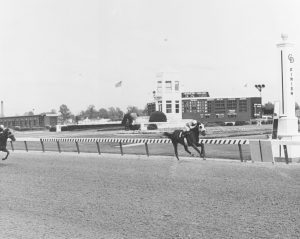
BackTracks: Key to the Mint unlocks a title
In a new BackTracks, the story of the largely forgotten Key to the Mint, who was champion three-year-old despite going 0-for-2 in Triple Crown races.
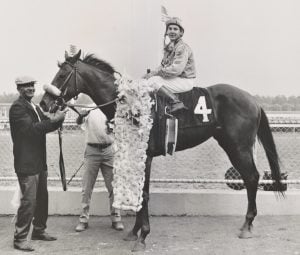
BackTracks: Run the Gantlet’s championship year
In today’s BackTracks, Run the Gantlet finds new life on the turf, and fills major shoes in trainer Elliott Burch’s powerful stable.
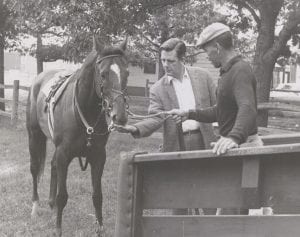
BackTracks: Elliott Burch’s remarkable triple
BackTracks focuses on Midlantic racing history. Today, Hall of Famer Elliott Burch, who, three times in a decade, pulled off an extraordinary training feat.
Sources
- https://en.wikipedia.org/wiki/Smarty_Jones
- https://en.wikipedia.org/wiki/Elusive_Quality
- https://en.wikipedia.org/wiki/I%27ll_Get_Along_(horse)
- https://www.equibase.com/profiles/Results.cfm?type=Horse&refno=6119092®istry=T
- https://www.equibase.com/profiles/Results.cfm?type=Horse&refno=1396994®istry=T&rbt=TB
- https://www.equibase.com/profiles/Results.cfm?type=Horse&refno=1357530®istry=T&rbt=TB
- https://www.equibase.com/profiles/Results.cfm?type=Horse&refno=878074®istry=T&rbt=TB
- https://www.equibase.com/profiles/Results.cfm?type=Horse&refno=5318308®istry=T
- https://www.equibase.com/profiles/Results.cfm?type=Horse&refno=1425295®istry=T&rbt=TB
- https://www.equibase.com/profiles/Results.cfm?type=People&searchType=T&eID=1693&rbt=TB
- http://www.americanclassicpedigrees.com/smarty-jones.html
- http://www.americanclassicpedigrees.com/elusive-quality.html
- https://equistartrainingandbreeding.com/smarty-jones/
- https://www.americasbestracing.net/the-sport/2022-smarty-jones-unlikely-hero
- https://www.pedigreequery.com/index.php?query_type=progeny&search_bar=progeny&h=ILL+GET+ALONG&sort=Year&done=y&filter=All%20Horses&cf=
- https://vault.si.com/vault/2004/05/10/smart-money-smarty-jones-silenced-the-skeptics-with-an-impressive-win-in-the-kentucky-derby-and-collected-a-5-million-bonus-in-the-process
- https://www.heraldtribune.com/story/news/local/venice/2019/05/28/legend-of-smarty-jones/5050684007/
- https://www.goupstate.com/story/news/2004/06/03/smartys-run-has-fans-hearts-racing/29722224007/
- https://www.bloodhorse.com/horse-racing/articles/166566/roy-chapman-owner-breeder-of-smarty-jones-dies
- https://patha.org/about-the-ptha/parx-hall-of-fame/robert-w-camac/
- https://www.washingtonpost.com/archive/sports/2004/04/27/its-been-a-long-ride-for-smarty-jones/d9b9aba0-5980-4ab6-b170-5debfebb2bc4/
- https://www.nytimes.com/2004/05/12/sports/horse-racing-derby-success-tinged-with-sadness.html
- https://www.deseret.com/2004/6/3/19832450/camacs-turn-tragedy-into-a-racing-success
- https://www.bloodhorse.com/horse-racing/articles/190338/late-trainer-camac-remembered-by-colleagues
OTHER SOURCES
Interview with John Servis, April 13, 2023.
Jerardi, Dick, “Perfect Parx Return for Smarty Jones,” Philadelphia Daily News, September 3, 2019.
LATEST NEWS



